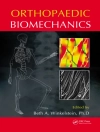Comprehensive in scope and meticulously researched, Handbook of Obesity Prevention analyzes the intricate causes of this public health crisis, and sets out concrete, multilevel strategies for meeting it head-on. This innovative handbook starts by clearly defining obesity in clinical, epidemiologic, and financial terms. From there, expert contributors provide insights on current issues, methods, and controversies in the field, focusing on new opportunities for prevention, successful interventions and initiatives, and guidelines for planning and implementing programs and evaluating results. This systematic approach to large-scale social and policy change gives all parties involved – from individual practitioners to multinational corporations – the tools to set and attain realistic goals based on solid evidence and best practice in public health.
Inhaltsverzeichnis
Why Obesity Prevention?.- What is Obesity? Definitions Matter.- Descriptive Epidemiology of Obesity in the United States.- Costs of Obesity.- Obesity Prevention Concepts and Frameworks.- Consumer Perspectives and Consumer Action.- The Role of Government in Preventing Obesity.- Planning and the Built Environment:Implications for Obesity Prevention.- The Food Industry Role in Obesity Prevention.- Media, Marketing and Advertising and Obesity.- Global Context of Obesity.- Organizational Change for Obesity Prevention—Perspectives, Possibilities and Potential Pitfalls.- Community-Based Approaches to Obesity Prevention: The Role of Environmental and Policy Change.- Health Care System Approaches to Obesity Prevention and Control.- Workplace Approaches to Obesity Prevention.- Obesity Prevention in School and Group Child Care Settings.- Individual Behavior Change.- Obesity Risk Factors and Prevention in Early Life: Pre-Gestation through Infancy.- Obesity Prevention During Preschool and Elementary School-Age Years.- Obesity Prevention During Preadolescence and Adolescence.- Obesity Prevention During Adulthood.- Obesity Prevention: Charting a Course to a Healthier Future.
Über den Autor
Shiriki K. Kumanyika, Ph.D., R.D., M.P.H., is Professor of Epidemiology in Biostatistics and Epidemiology and Pediatrics (Nutrition) Associate Dean for Health Promotion, and Disease Prevention, Director, Graduate Program in Public Health Studies at the University of Pennsylvania School of Medicine. Dr. Kumanyika holds a BA in Psychology from Syracuse University, an MS in Social Work from Columbia University, Ph D in Human Nutrition from Cornell University, and Master of Public Health (MPH) from the Johns Hopkins University School of Public Health. Dr. Kumanyika has authored or co-authored more than 200 scientific articles, book chapters and monographs related to nutritional epidemiology, obesity and minority health. She is Director of an NIH-funded Project EXPORT Center of Excellence whose focus is on research, outreach and training to reduce obesity and related health disparities. She was a member of the Institute of Medicine Panel on Obesity Prevention in Children and Youth, currently serves on the NIH Clinical Obesity Research Panel and since 1996 has chaired the Prevention Group of the International Obesity Task Force. Her other professional activities include serving on the Executive Board of the American Public Health Association and Chairing the Expert Panel on Prevention and Population Sciences of the American Heart Association.
Ross C. Brownson, Ph.D., is Chair, Department of Community Health Professor of Epidemiology, St. Louis University School of Public Health, St. Louis, MO. He was formerly a Division Director with the Missouri Department of Health. Her received his Ph.D. in environmental health and epidemiology at Colorado State University. Dr. Brownson is a chronic disease epidemiologist whose research has focused on tobacco use prevention, promotion of physical activity, evaluation of community-level interventions. He is the principal investigator for a C-funded Prevention Research Center—a 5-year, multi-million dollar projectaimed at developing innovative approaches to chronic disease prevention in high-risk rural communities. Dr. Brownson is currently conducting an NIH-funded diabetes prevention study, is developing and testing effective dissemination strategies designed to increase rates of physical activity among adults, or the CDC, and is studying the environmental characteristics of activity-friendly communities. He was a member of the Institute of Medicine Committee on Obesity Prevention in Children and Youth. Dr. Brownson has extensive experience in the teaching and practice of public health. He is associate editor of the Annual Review of Public Health, a former member of the 15-person CDC Task Force developing the Guide to Community Preventive Services and is also the editor or author of the books: Chronic Disease Epidemiology and Control, Applied Epidemiology, Evidence-Based Public Health, and Community-Based Prevention. Dr. Brownson is active in numerous professional associations, including the American Public Health Association and the Missouri Public Health Association.












